Will “Work From Home” become the rule, rather than the exception?
The Markets
The Dow Jones Industrial Average closed on Friday at 34,382, down 1.0% for the week. The broader S&P 500 Index closed Friday at 4,173, down 1.4% for the week. The tech-heavy Nasdaq closed Friday at 13,430, down 2.3% for the week. For the year to date, the Down is up 12.3%, the S&P 500 Index is up 11.1%, and the Nasdaq is up 4.2%. By way of comparison, the FTSE Europe Index is up 11.9% for the year to date.
Investors are attempting to reconcile concerns about rising inflation with statements by Federal Reserve officials that upward price pressure is expected to be temporary and will ease as global supply chains adapt to rising consumer and business demand.
Despite the concerns about rising prices, the CBOE Volatility Index – also known as the VIX or the “investor fear gauge” – has returned to pre-pandemic levels.
The chart below shows the 10-year history of the index, which represents the market’s expectations for stock market volatility over the coming 30 days:
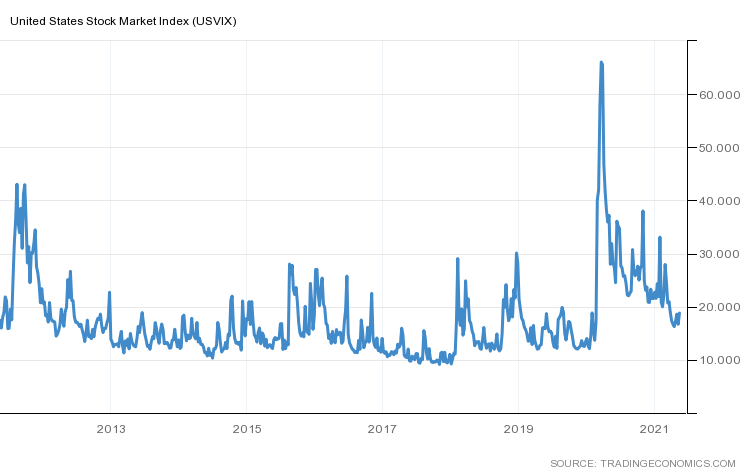
Source: Trading Economics
In the bond market, the yield on the benchmark 10-year Treasury note fell to 1.645% on Friday, after reports revealed that US retail sales were unchanged in April, below market expectations of a 1.0% increase.
The chart below shows the yield of the 10-year US Treasury note over the past year:
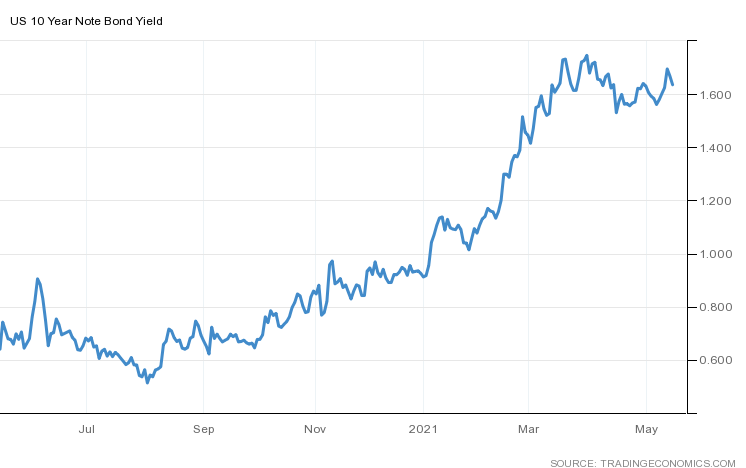
Source: Trading Economics
The Economy
America continues its reopening efforts, helped by the rapid pace of COVID-19 vaccinations, while the government’s massive stimulus package has boosted demand.
An open question is whether the “work from home” employment trend, driven by companies’ responses to the COVID-19 pandemic, will be a lasting one, or temporary. Consider Facebook, which has announced that it will allow up to half its workforce to work from home forever. The answer will have a significant impact on the commercial real estate market.
The Bay Area, for example, which has highest concentration of technology companies in the world, currently has an enormous surplus of office space. According to one report, at the end of the first quarter of 2021, the amount of vacant sub-lease space in San Francisco totaled nearly 10 million square feet, up from about 3 million square feet in late 2019.
The overall office vacancy rate in the city rose to nearly 19% in Q1 2021, from 6% a year earlier – the highest since 2005, when the Bay Area was still recovering from the 2000-02 dot com crash. Other major cities in the US face similar space overhangs, but San Francisco has the most “remote-oriented” workforce.
The Labor Market
The number of Americans filing new claims for unemployment benefits dropped by 34,000 to 473,000 for the week ending May 8th, the lowest level since the pandemic first impacted the US labor market in March 2020. The reported figure was slightly below market expectations of 490,000.
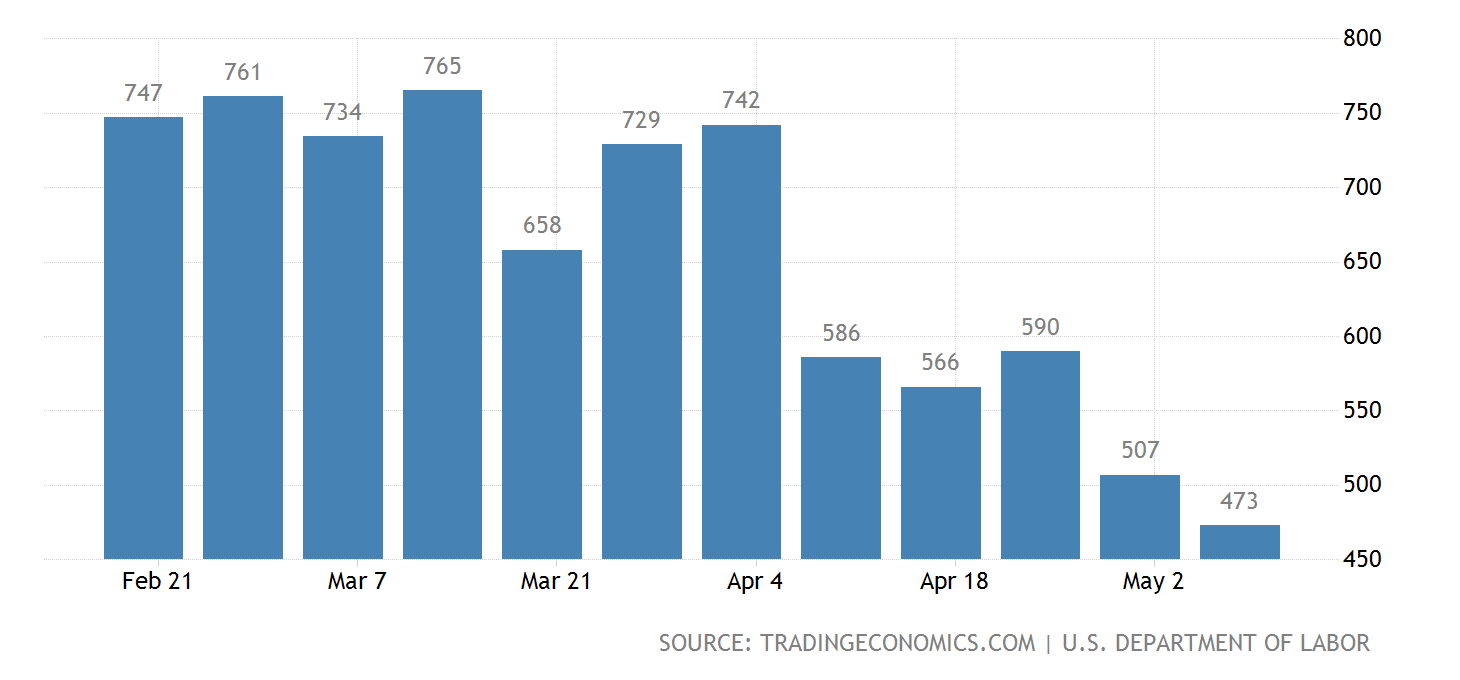
Source: Trading Economics
COVID-19
Across 219 countries and regions, nearly 163 million have contracted one of the virus’s variants, and over 3.3 million have died. In the US, 33 million have been infected and over 586,000 have died.
Testing
As has been the case for several weeks, the number of tests performed in the US continues to decline, as the number of people who have been vaccinated climbs. It’s clearly good news that the positivity rate has also continued to decline and remains well below 5%.
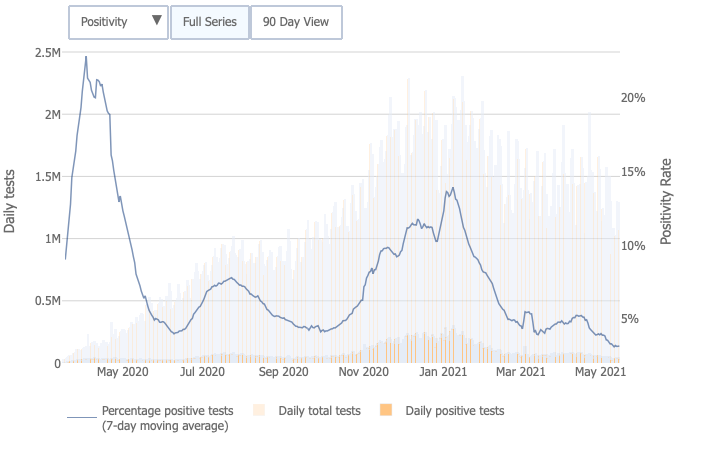
Source: Johns Hopkins University
Cases
The chart below shows that the rolling seven-day average for daily cases continues to decline, as well.
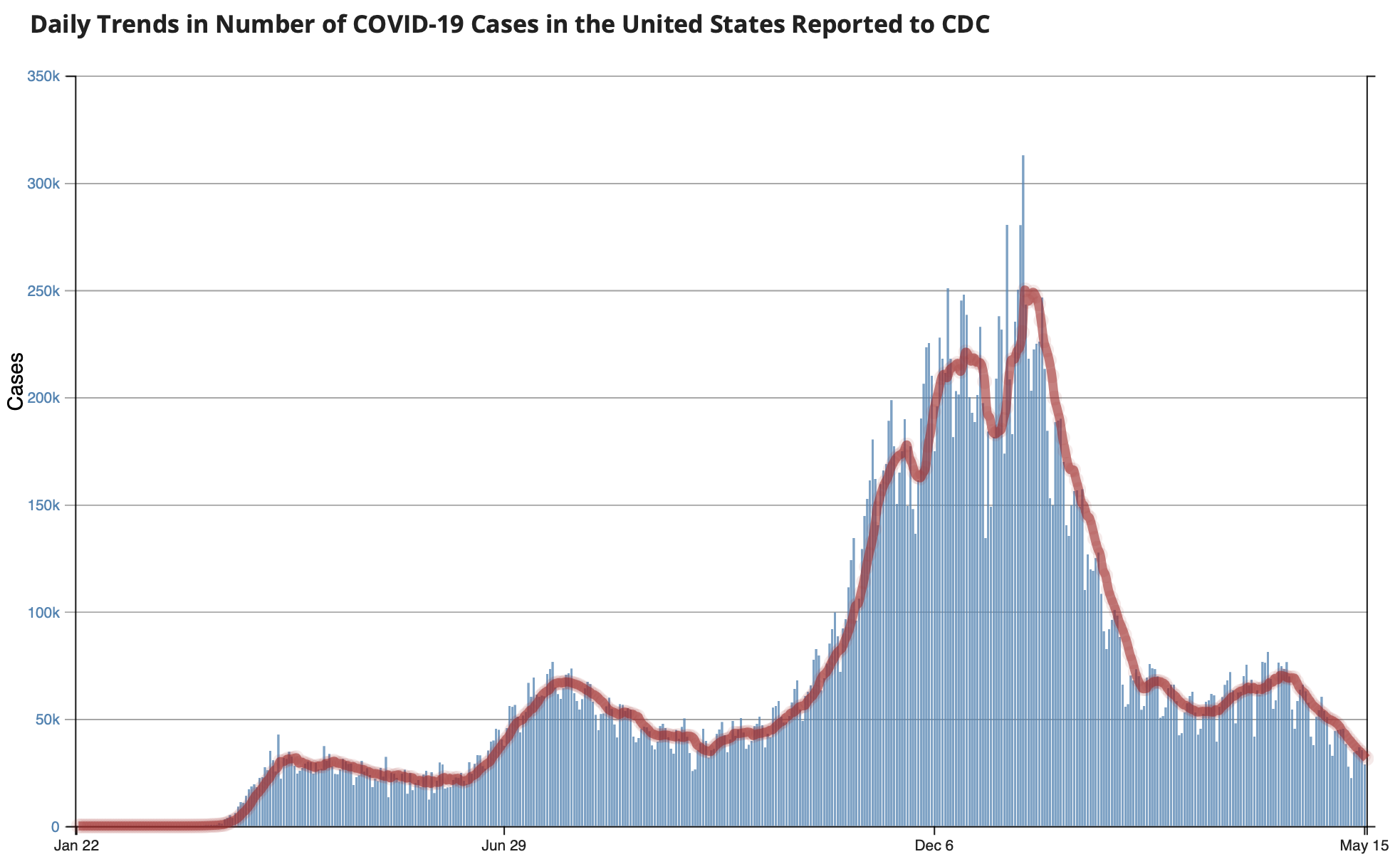
Source: CDC
Hospitalizations
The number of COVID-related hospitalizations continues to trend downward, as well, despite the emergence and spread of more transmissible variants.
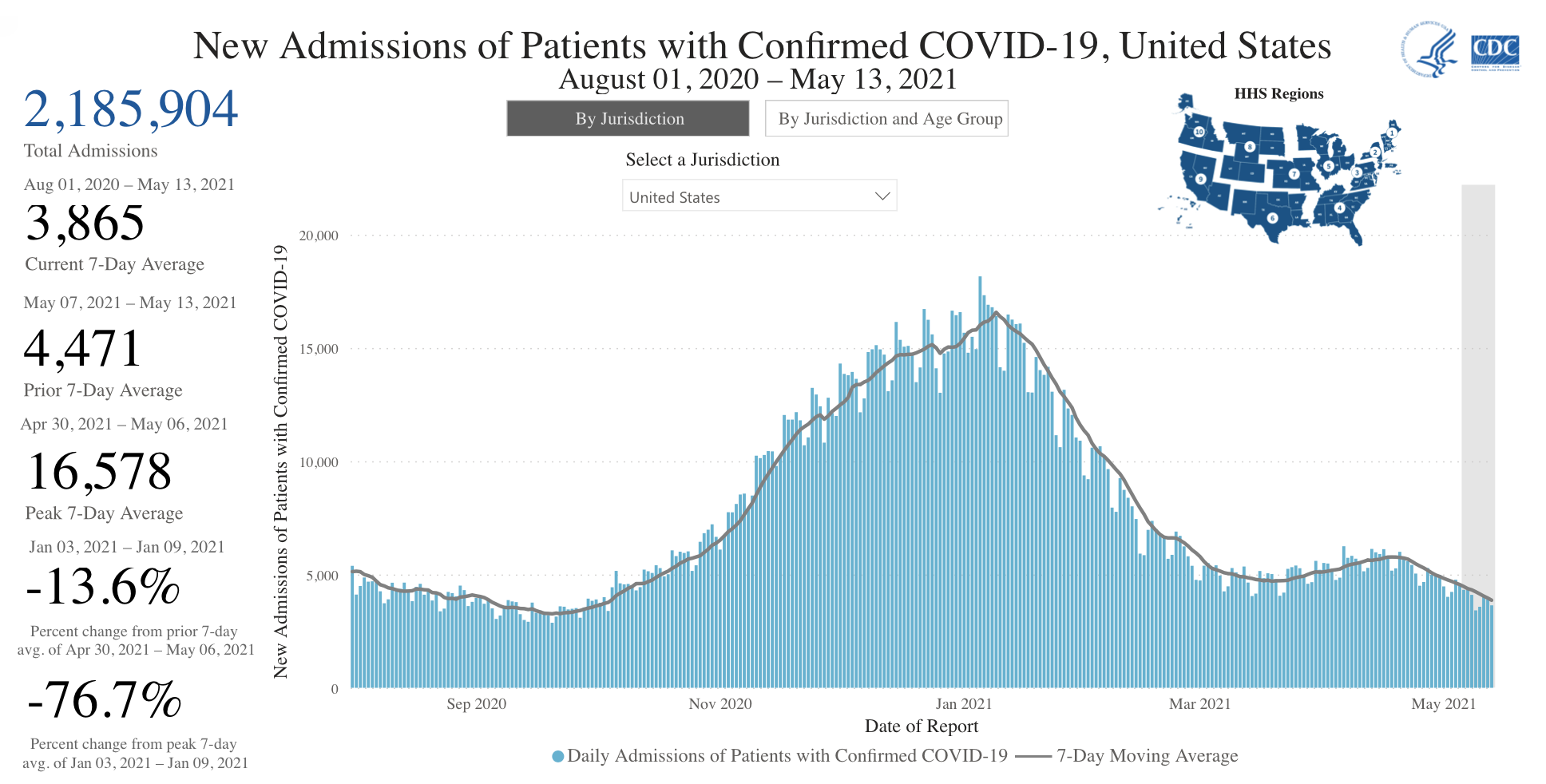
Source: CDC
Deaths
While the rolling seven-day average for daily deaths from COVID is continuing to decline, we are still losing an unacceptably high number of our fellow Americans each day.
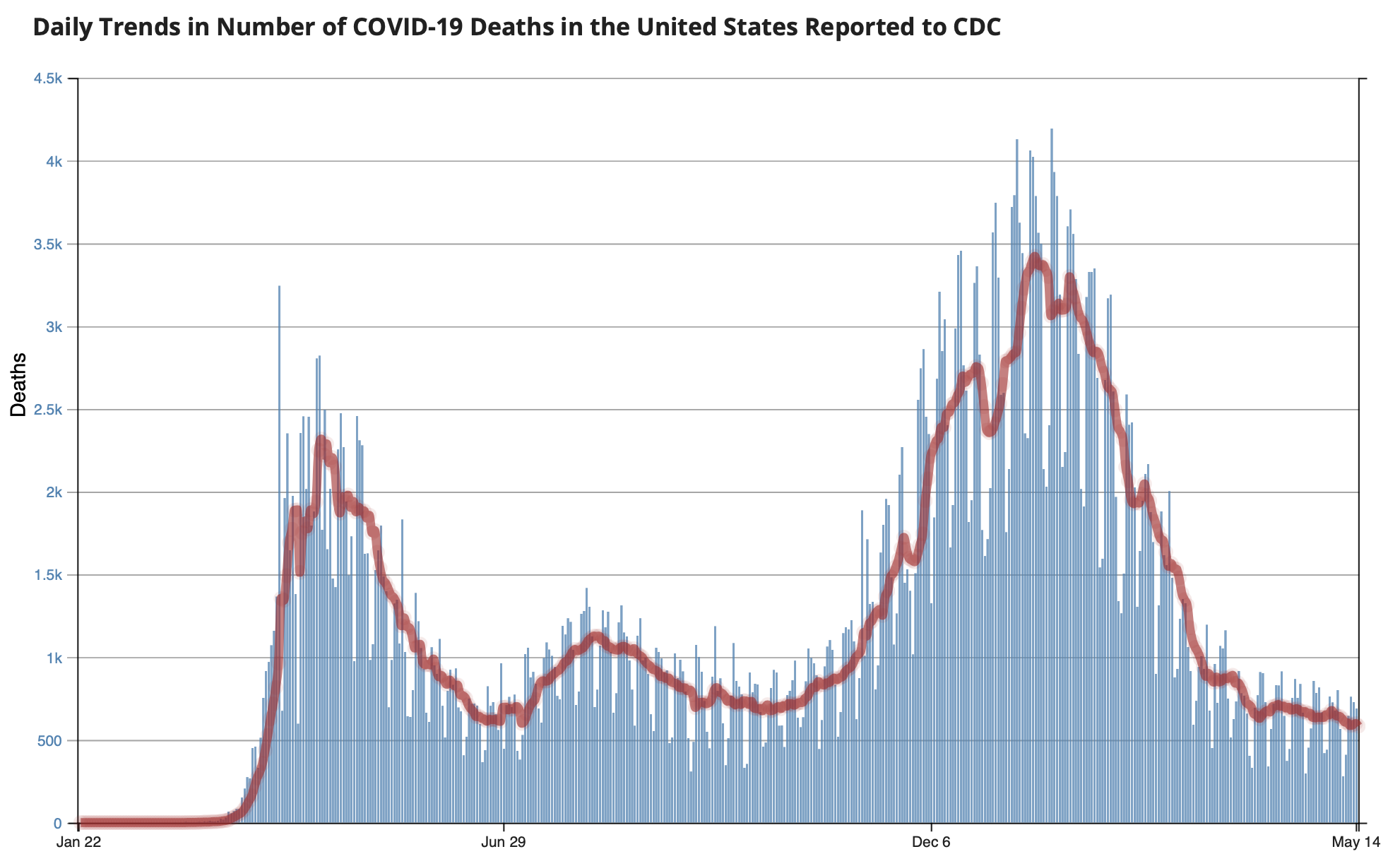
Source: CDC
Vaccination
More than 270 million vaccine doses have been administered in the US, so that over 121 million people – or nearly 37% of the total population – have been fully vaccinated. Maine (48.7%), Connecticut (47.6%) and Vermont (46.1%) lead the way in getting a high percentage of their population vaccinated, while Alabama (27.5%) and Mississippi (25.8%) lag.
The chart below shows the daily count of vaccine doses administered, as well as the rolling seven-day average:
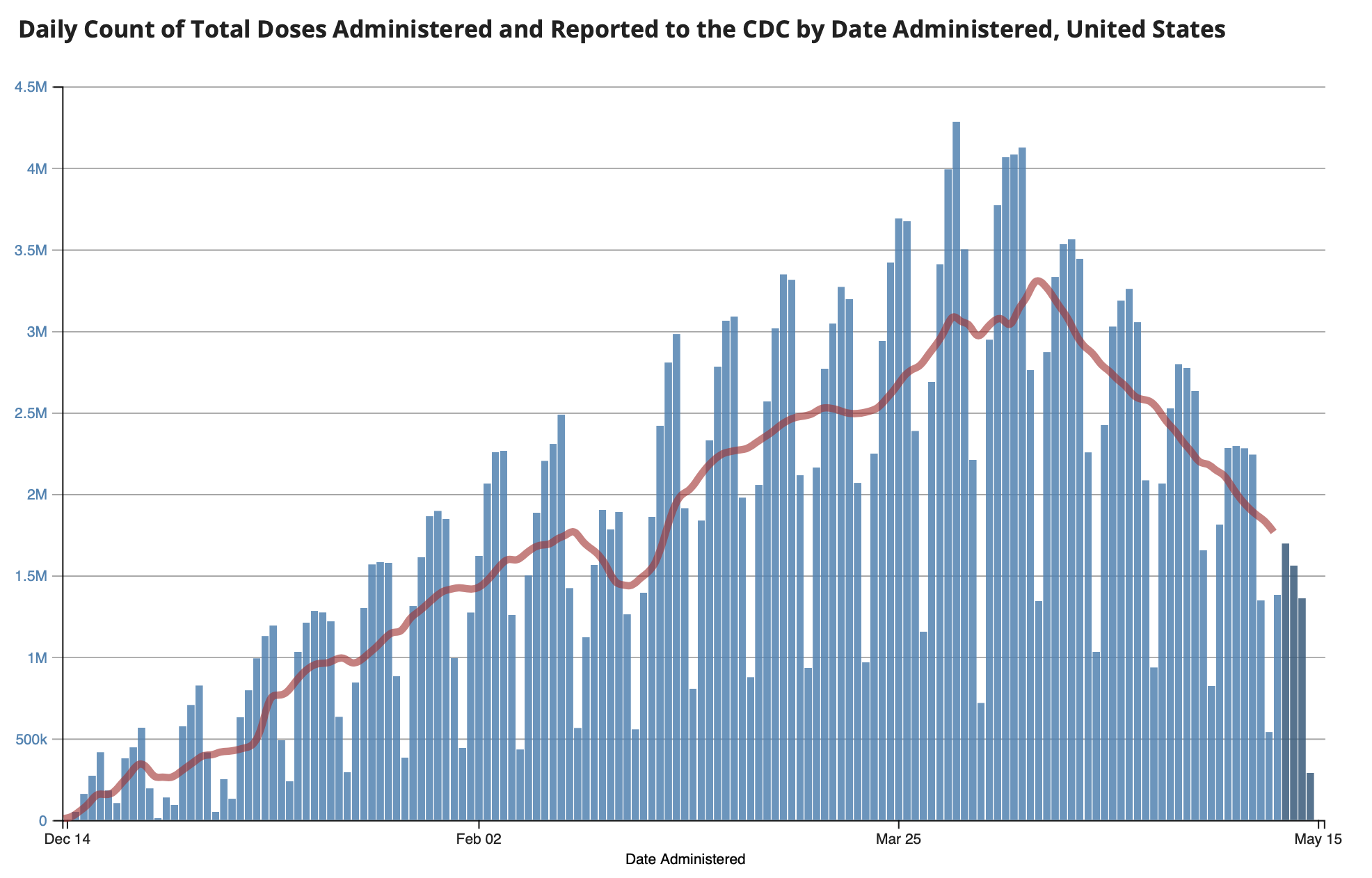
Source: CDC
Last week, federal health officials withdrew almost all masking and physical distancing requirements for fully vaccinated Americans. While good news, the announcement created a good deal of confusion for those who find that their states, counties and cities have conflicting requirements or guidelines in place.
While the CDC announcement does mark a major point in the fight against the coronavirus pandemic, with over half of all Americans still unvaccinated the burden is now on local governments and businesses to assess whether removing their requirements is safe and appropriate.
In Oregon, the state government’s position is that until 70% of those 16 and older have been vaccinated, the County Risk Level Framework will remain in place. In California, where 30 million vaccine doses have been administered, the state plans to fully reopen by June 15th.
Closing Thoughts
In the coming days, everyone in the Springwater team will be fully vaccinated. While virtual meetings have been a godsend over the past 12+ months – and for our clients located more distant, a “normal” resource for much longer – we’re excited to start welcoming you back to our Portland and Santa Cruz offices in person in the coming weeks and months. There’s no perfect substitute for real, face-to-face interpersonal communication and connection.
We remain available to support you any way we can.
Keep the faith, get vaccinated when you can, be safe, and stay healthy.
PLEASE SEE important disclosure information at www.springwaterwealth.com/blog-disclosure/.
